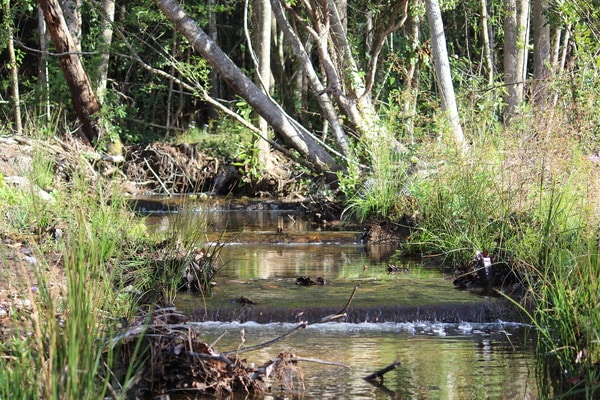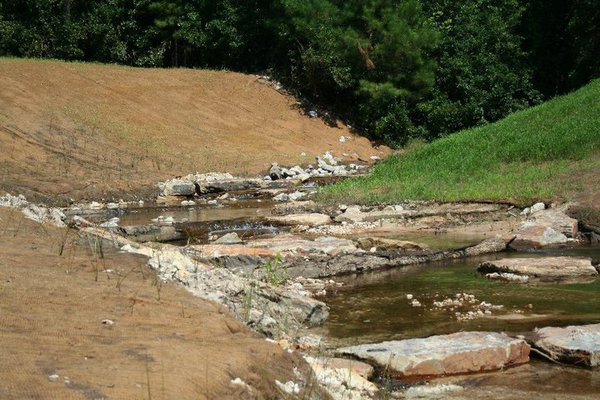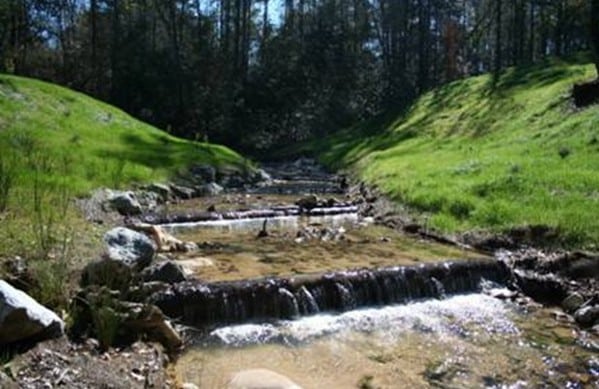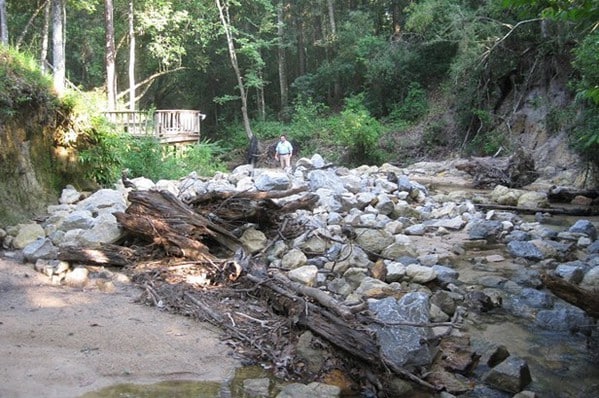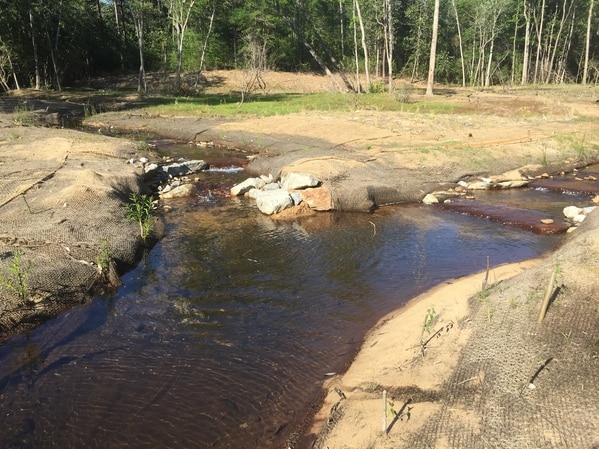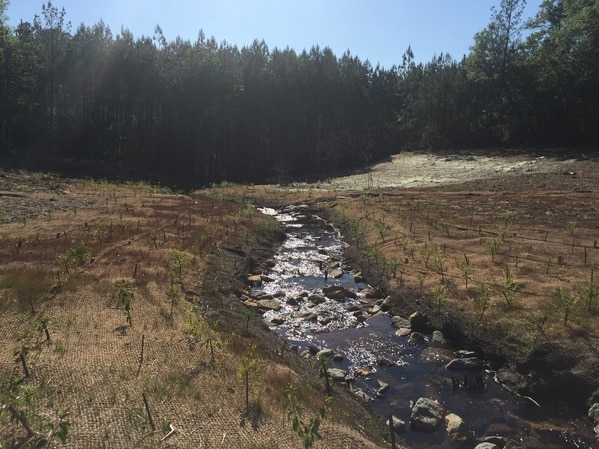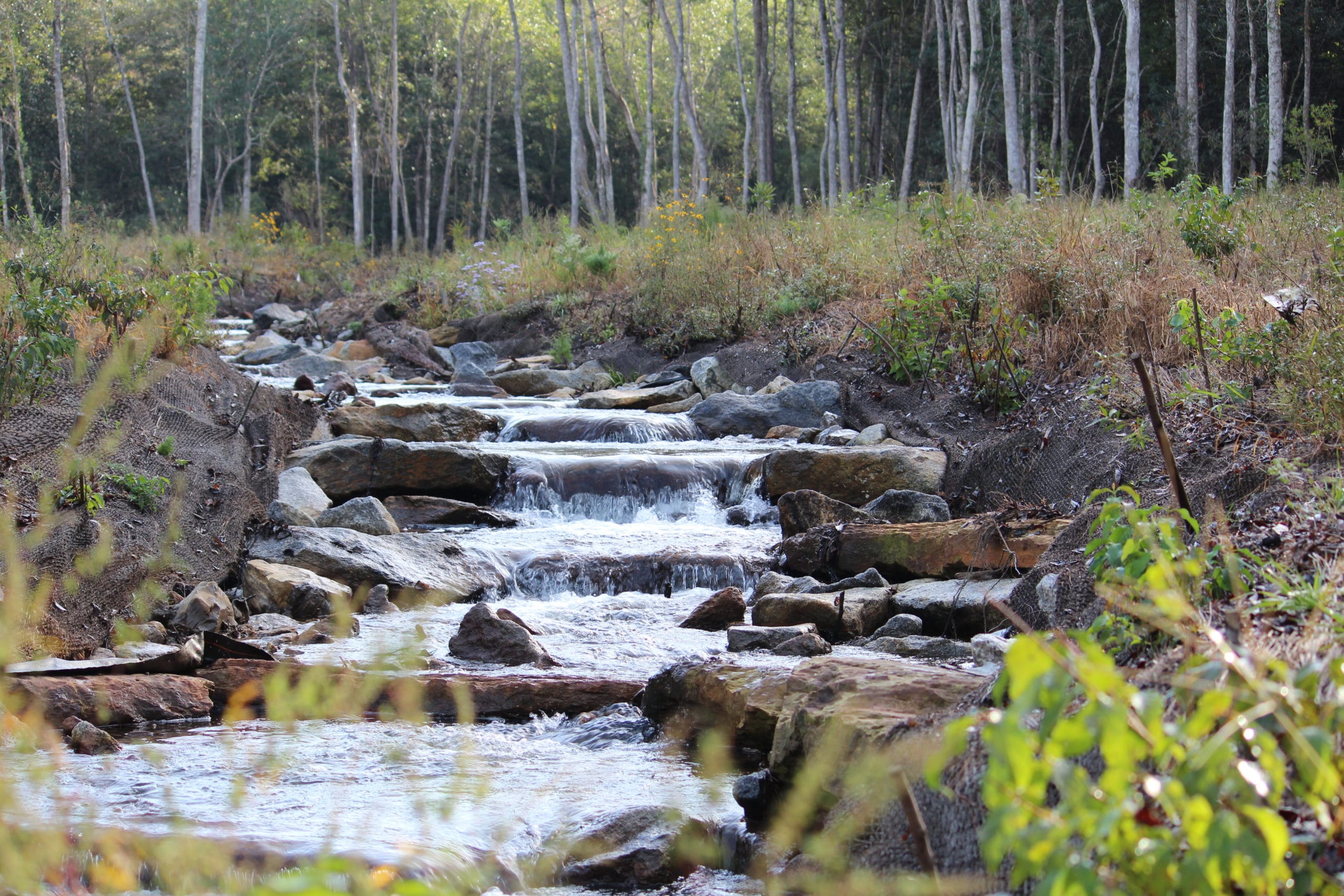D’Olive Creek Stream Restoration
Decades of extensive erosion, head-cutting, and sedimentation have plagued the D’Olive Watershed in Baldwin County, Alabama. Increased volume and velocity of stormwater runoff, as well as changes to local drainage patterns, escalated concerns within the watershed that includes D’Olive Creek, Lake Forest Lake, D’Olive Bay, and Mobile Bay.
In association with the Dauphin Island Sea Lab (DISL) and the Mobile Bay National Estuary Program (MBNEP), Volkert entered into a contract to restore and stabilize the stream bed requiring the excavation of a new and wider floodplain in combination with in-stream flood structures to provide for increased flood retention, resulting in decreased in-channel flow/velocity that would also restore nearby wetlands and mitigate future wetland delineation efforts. This project is supported wholly or in part by the Mobile Bay National Estuary Program as part of a grant from the National Fish and Wildlife Foundation Gulf Environmental Benefit Fund.
Volkert provided engineering, environmental, and monitoring services for this project that includes 1,200 linear feet of existing creek and tributaries that have been impacted and are in need of restoration. An existing conditions assessment was conducted to determine stable forms of vegetation communities both upstream and downstream that could withstand future events. A stream model was developed that showed water flow and sediment transport conditions that would be expected in high flow events. All design efforts were designed for a 100-year flood event.
Restoring and stabilizing the streambed required constructing a new and wider floodplain and installing in-stream structures. Volkert designed a natural channel allowing for resilient management of velocity and shear stresses using log sills, rock vanes, and wood toe revetments built from on-site logs, native vegetation, and boulders from in-state quarries. Restoration included elevating the streambed to reconnect adjacent wetlands and constructing two retention ponds for resiliency against high-flow events.
The design team provided monthly progress reports with schedule updates. Additional services included topographical surveys of the access road and supplemental areas to locate utilities and other avoidance areas along the project site, utility coordination, bidding assistance, modeling, cost estimates, development of construction plans, permitting compliance, public involvement services with stakeholders, and construction phase services.
Location
Daphne, Alabama
Client
Mobile Bay National Estuary Program

